A core prediction of the core accretion model for giant planet formation is that the frequency of readily detectable giant planets should increase with both increasing stellar metallicity and with increasing stellar mass:
It’s now well established that the above diagram is zeroth-order correct, but until fairly recently, the conventional wisdom held that there is little evidence for a strong planet-metallicity correlation among the handful M-dwarf stars (for example, Gliese 876) that are known to harbor giant planets. One is then naturally led to speculate that the odd giant planets in a systems like Gliese 876 might be the outcome of gravitational instability rather than core accretion.
The profusion of molecular lines in the atmospheres of M dwarfs make it hard to determine their metallicities using the techniques of spectral synthesis that work well for hotter stars like the Sun. Fortunately, though, the red dwarfs’ legendary stinginess provides another opportunity for assessing metallicity. Red dwarfs are so thrifty, and they evolve so slowly, that every single one that’s ever formed has barely touched its store of hydrogen. With all the fuel gauges pegged to full, a critical parameter’s worth of confusion is removed. Red dwarfs of a particular mass should form a well-defined one-parameter sequence in the Hertzsprung Russell diagram, and that parameter should be metallicity. If one can accurately plot a particular low-mass star on a color-magnitude diagram, then there should exist a unique and high-quality mapping to both the star’s mass and its metallicity. Physically, an increase in metallicity leads to a higher photospheric opacity, which provides an effective layer of insulation for a star. Add metals to a red dwarf and it will move down and to the right in the Hertzsprung Russell diagram.
Because of the nightmarish complexity of red dwarf atmospheres, it’s not easy to find the calibration that allows one to make the transformation between an observed absolute magnitude and color index (e.g. M_K and V-K) to the stellar mass and metallicity. In 2005, however, Xavier Bonfils and his collaborators made a breakthrough by employing a simple should’ve-thought-of-that-myself technique: Binary stars generally stem from a common molecular cloud core, and so the members of a binary pair should thus generally have very similar metallicities. In particular, if you measure the metallicity of an F, G, or K binary companion to an M-dwarf, then you can assume that the M-dwarf has the same metallicity. Do this often enough, and you can infer the lines of constant M-dwarf metallicity on a color-magnitude diagram. With the calibration in place, metallicity determinations for field red dwarfs are simply a matter of reading off the nearest iso-metallicity locus. Here’s the key diagram from the Bonfils et al. paper:
The puzzling outcome of the Bonfils et al metallicity calibration was that the rare giant-planet bearing M-dwarfs such as Gliese 876 and Gliese 849 didn’t appear to be particularly metal rich, and that worked to undermine confidence in the core accretion picture. One would naively expect that a low-mass disk will need all the help it can get in order to build giant planet cores before the gas is gone. If anything, the planet-metallicity correlation should be strongest among the M-dwarfs.
Important recent progress was made last year by John Johnson and Kevin Apps, who published a reevaluation of Bonfil et al’s. isometallicity loci in the color-magnitude diagram. Johnson and Apps point out that application of the Bonfils et al. calibration produces an aggregate of local M-dwarf stars that have a significantly lower average metallicity than that for the local FGK stars. There’s little reason to expect such a dichotomy, which implies that the Bonfils et al. correlation may be systematically underestimating metallicity by roughly a factor of two. No small potatoes!
Johnson and Apps adjusted the calibration to bring the metallicities of the local M dwarfs into line with the metallicities of the local FGK dwarfs. Here’s a slightly adapted version of their key diagram:
With the revised calibration, Gliese 876 turns up with a metallicity twice that of the Sun, and there is excellent evidence that the planet-metallicity correlation holds strongly for the M dwarfs that harbor relatively massive planets. Furthermore, it’s hard to argue with the two recent papers (one, two) from the California Planet Survey which report the detection of relatively massive planets orbiting two nearby M dwarfs, both of which have extremely high metallicities with the revised calibration.
The statistics are still small-number, but there’s a strong hint that the planet-metallicity correlation for Neptune and sub-Neptune mass planets orbiting M-dwarfs is stronger than it appears to be at FGK (where it’s effectively non-existent). Gliese 176, and Gliese 436, for example, are both quite metal-rich. I bet that a survey like Mearth could jack up its yield by shading its telescope visits to favor the high-metallicity stars on the observing list…
Indeed, if we plot Gliese 1214 (V=15.1±0.6, K=8.78±0.02, parallax=0.0772±0.0054”, distance modulus=0.562±0.16) in comparison to the stars in the local volume, it looks like Gliese 1214 has of order twice solar metallicity if we adopt the nominal values for V,K and the distance. That’s very intriguing…

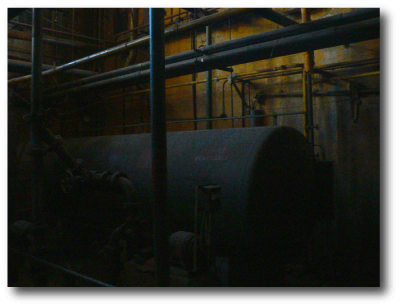
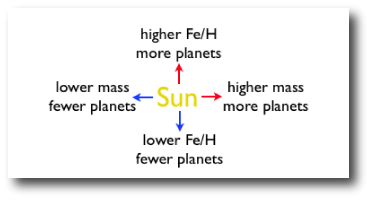
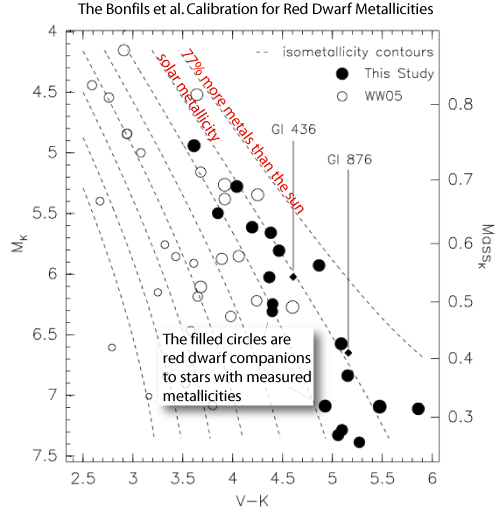
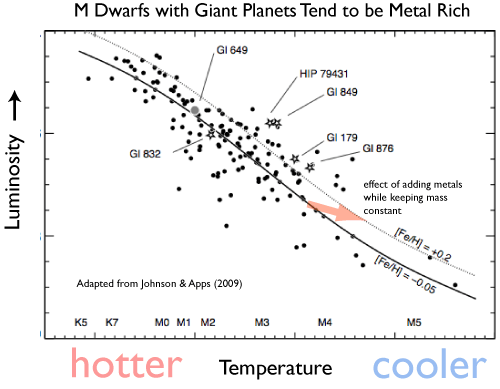
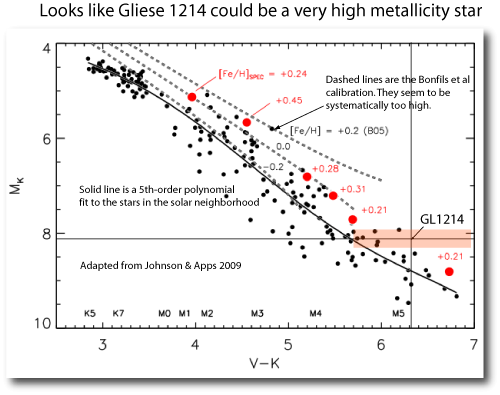
Interesting that most Jupiter-type planets around M dwarfs are turning up beyond the ice-line, with the obvious exception of Gliese 876. Seems that not only are M dwarfs inefficient at making such planets, they aren’t very good at migrating them inward either. Seems to also be the case for low-metallicity stars at higher masses: the low-metallicity end of the EPE catalogue has long-period Jupiters but none of the easier-to-detect hot Jupiters.
This leads to the question of how much these correlations depend on actual planet abundance as opposed to changing planetary system architectures.
Is there a mass below which red dwarves do not produce enough stellar wind to disperse their accrecionary disks? Or might they just push the gas out into the outer stellar system, but still well within the gravitational well of the star? If the latter, they you’d expect a luminosity/semimajor axis relationship for long period gas giants (which we can’t yet detect.)
Regarding GJ1214b, please note that the V=15.1 is a photographic plate magnitude, and probably shouldn’t be trusted to within at least a half magnitude. Still, it’ll be interesting to see if a better V leaves it in the same place on the Johnson & Apps plot!
@zach, that’s of course a good point. I updated the plot to include the 1-sigma errors.
Considering that the statistics are based on small numbers, it would be useful to check that the space motions of the M dwarf sample are similar the local F,G and K stars. This would add confidence that the two samples are indeed drawn from the same population. For example, Barnard’s star despite being very close, is actually from the halo population and is why it has such a high proper motion. So this calibration could be in error if say, one sample had a significantly more halo stars than the other. Possibly there could also be problems if the sample differences were more subtle, such as being composed of different disk populations.
@DavidB: Indeed!
Don’t halo and thick disk stars generally have lower metalicities, not higher ones?
@cwmagee: Yes, which is precisely my point about how the calibration could break down if the samples being compared come from different populations.
@DavidB: That’s a valid concern, and one that Kevin and I addressed in the paper. Figure 1 of our paper shows that there is no metallicity trend (downward or otherwise) from spectral types G to mid-K among an 18-parsec volume-limited sample. If there is a systematic metallicity offset among the M dwarfs, it must be abrupt and start just after the lower temperature cutoff of the SPOCS catalog. But there’s nothing particularly special about M dwarfs. They live a long time, but so do late G dwarfs. Some may have high space motions, but so do some early K dwarfs. In other words, your argument implies a special formation/dynamical history for the Ms that doesn’t affect slightly more massive stars.
As an additional counterargument, note that our calibration stars all have more massive binary companions. Indeed, this how we were able to infer the metallicities of the M dwarf calibrators. If our M dwarf calibration sample were contaminated with halo stars, it would imply that the majority of nearby FGK+M binary pairs are from the halo, rather than being representative of the local population. And that would just be weird :)
Greg, what about that anagram you posted. Is there any point in trying to come up with solutions?
I hope so…